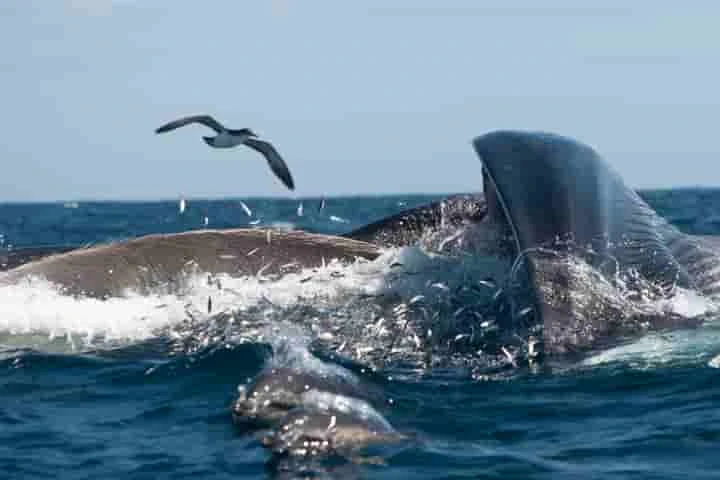It is some sight to watch one of the world’s biggest creatures – the majestic whales – leaping out of the water to feed with their mouths open. What was a marvellous sight for others, made scientists ponder as to how these mammals did this without choking and drowning due to the pressure of such huge quantity of water, as per a report in sciencenews.org.
It was the plug, located at the back of the mouth of a fin whale that pointed to the answer. This stopper made of fat and muscle acted as a block between the whale’s mouth and its pharynx – the opening to the digestive and respiratory tracts of the creature.
The function of the stopper seemed to be block the water from entering into the stomach and lungs of the creature when it jumped in the air to eat. This as per the researchers explained the whales not choking while doing this act in a report that was published in Current Biology.
Explaining it in simple terms, Kelsey Gil said: “Think of [the plug] as a trapdoor. It’s always closed unless muscular activity pulls it out of the way.”
Gil, is a marine biologist at Vancouver’s University of British Columbia and she and her team pinpointed at this stopper or plug following close scrutiny of the pharynx of 19 fin whales or Balaenoptera physalus which had been retrieved from a whaling station in Iceland.
Being enormous devourers of food, the dimensions of these fin whales are similar to that of a mid-size passenger plane and they can weigh nearly 100 metric tonnes, thus making it easier to work with just the pharynx. Gil remarked: “Even then we had to use a forklift to move the pharynx to the lab. It can weigh a few hundred pounds.”
In the laboratory, Gil and her team manoeuvred pharynx different structures to understand how they moved and also examined the direction of the muscle fibres present in the throat of the creature to comprehend the behaviour of the muscles when they contracted.
The pressure that is created when the whale takes in water results in the stopper putting a seal which is tight over the pharynx. With their mouth full of prey and water, the mammal through its baleen plates pushes the water before swallowing it. The reflex action of swallowing in all likelihood activates the muscle that pulls the plug right to the top of the throat, thereby obstructing the upper airways and allowing the prey to move into the digestive tract.
Also read: Killer whales can hunt for longer as Arctic ice melts
This stopper seems to be a unique feature of mammals according to the scientists and it probably could throw light on the other lunge-feeders managing to eat without getting choked by the water.
Airing her views on this study, Sarah Fortune who is an expert in large whales at Dalhousie University in Halifax, Nova Scotia said: “The discovery of the ‘oral plug’ answers a long-standing question about how whales can simultaneously protect their respiratory tract while opening their mouths wide to engulf prey-laden water.”
Fortune who was not part of the study made a pertinent observation. She said it helped science and people to appreciate the adaptations that the land mammals underwent to go back to becoming water creatures.




















